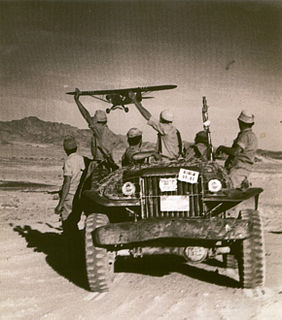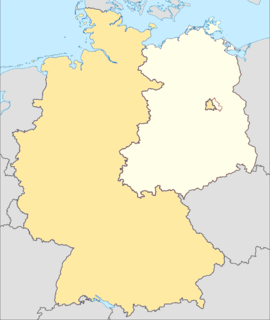Army
The Chief of the Army's general staff was tasked with the administrative management of the Belgian army, as well as with procurement, training and doctrine. In case of war most units would have come under NATO's Northern Army Group, while one battalion of the Para-Commando Regiment would have been assigned to Allied Command Europe's ACE Mobile Force-Land (AMF(L)). Depending on operational needs Allied Command Europe (ACE) would have deployed AMF(L) to whatever theater needed reinforcements, with NATO's AFNORTH command in Norway the most likely destination. Reserve units stationed in Belgium would have remained under operational control of the army's general staff in wartime.
Interior Forces
- Army General Staff, Brussels
- Para-Commando Regiment , Leuven
- Headquarter Company, Leuven
- 1st Parachute Battalion, Diest
- 2nd Commando Battalion, Flawinne
- 3rd Parachute Battalion, Tielen
- 4th Commando Battalion (Reserve), based in Ruanda-Urundi until Rwanda's and Burundis independence in 1962, then a reserve formation in Belgium.
- Reconnaissance Squadron, Stockem, (18x Scorpion)
- Para-Commando Field Artillery Battery, Brasschaat, (6x 105mm M101 towed howitzers)
- Para-Commando Anti-tank Company, Flawinne, (12x MILAN ATGM launchers)
- Parachute Training Center, Diest, 12x Britten-Norman Islander
- Commando Training Center, Namur
- 3rd Carabineers Cyclists (Light Reserve Infantry Battalion)
- 4th Carabineers Cyclists (Light Reserve Infantry Battalion)
- 5th Ardennes Rifles (Light Reserve Infantry Battalion)
- 14th Line Infantry Regiment (Light Reserve Infantry Battalion)
- 1st Provincial Regiment Brabant (Reserve)
- 2nd Provincial Regiment Hainault (Reserve)
- 3rd Provincial Regiment West Flanders (Reserve) (Reserve)
- 4th Provincial Regiment East Flanders (Reserve)
- 5th Provincial Regiment Antwerp (Reserve)
- 6th Provincial Regiment Limburg (Reserve)
- 7th Provincial Regiment Liège (Reserve)
- 8th Provincial Regiment Luxembourg (Reserve)
- 9th Provincial Regiment Namur (Reserve)
- 4th Light Engineer Battalion, Amay
- 11th Light Engineer Battalion, Burcht
- 27th Heavy Engineer Battalion (Reserve)
- 31st Heavy Engineer Battalion (Reserve)
- 3rd Equipment Engineer Company (Reserve)
- 4th Equipment Engineer Company (Reserve)
- 7th Bridging Engineer Company (Reserve)
- 8th Bridging Engineer Company (Reserve)
- 15th Light Aviation School Squadron (mixed helicopter squadron)
- Para-Commando Regiment , Leuven
The nine provincial regiments were each assigned to one of the nine provinces of Belgium and they fielded one reserve infantry battalion and either a reserve armored or armored reconnaissance squadron. The 1st and 7th provincial regiments fielded two reserve infantry battalions. These regiments were tasked with protecting critical infrastructure in their province. The four light infantry battalions were the General Staff's mobile reserve. Engineering units were tasked with keeping the line of communication between the Port of Antwerp and the front open.
I Belgian Corps

The I Belgian Corps was assigned to NATO's Northern Army Group and partially forward deployed to Northern Hesse and North Rhine-Westphalia in the Federal Republic of Germany.
- I (BE) Corps , Cologne, FRG [1] [2]
- Corps Reconnaissance Command (COMRECCE), Arolsen
- Staff Company, Arolsen
- 1ste Jagers te Paard, Arolsen, (24x Scimitar, 24x Scorpion, 12x Striker, 12x Spartan, 4x Sultan, 4x Samaritan, 1x Samson)
- 2de Jagers te Paard, Lüdenscheid, (37x Leopard 1, 7x M113, 4x Scimitar, 1x Bergepanzer 2)
- 4e Chasseurs à Cheval, Arnsberg, (24x Scimitar, 24x Scorpion, 12x Striker, 12x Spartan, 4x Sultan, 4x Samaritan, 1x Samson)
- 1er Compagnie d’Equipes Spéciales de Reconnaissance (ESR), Troisdorf, (Long-range reconnaissance patrol)
- 210th Logistic Company, Arolsen
- Corps Artillery Command, Cologne
- Staff Company, Cologne
- 3rd Artillery Regiment, Werl, (4x Lance missile launchers)
- 13th Artillery Regiment, Büren, (Ammunition supply)
- 14th Anti-Air Artillery Battalion, Spich, (27x Gepard self-propelled anti-aircraft guns)
- 17th Horse Artillery Regiment, Altenrath, (24x M109A2 155mm self-propelled howitzers)
- 18th Artillery Regiment, Brasschaat, (24x M109A2 155mm self-propelled howitzers)
- 20th Artillery Regiment, Werl, (12x M110A2 203mm 155mm self-propelled howitzers)
- 35th Anti-Air Artillery Battalion, Spich, (27x Gepard self-propelled anti-aircraft guns)
- 73rd Special Ammunition Battery, Soest
- 80th Observation and Surveillance Battery, Cologne
- 95th Hawk and Lance Maintenance Battery, Werl
- 1st Light Aviation Group, Cologne
- Staff and Services Company, Cologne
- 16th Light Aviation Squadron, Cologne, (10x Alouette II, 3x BN-2A)
- 17th Light Aviation Squadron, Werl, (10x Alouette II, 3x BN-2A)
- 18th Light Aviation Squadron, Merzbrück, (10x Alouette II, 3x BN-2A)
- 1st Engineer Group, Cologne
- Staff Company, Cologne
- 1st Engineer Regiment, Cologne, (two field engineer companies, one M48AVLB armoured vehicle-launched bridge and one NBC-defense company)
- 3rd Bridge Engineer Regiment, Cologne, (with three Mobile Floating Assault Bridge (MOFAB) companies)
- 6th Engineer Regiment, Cologne, (two field engineer companies, one M48AVLB armoured vehicle-launched bridge and one nuclear demolition company)
- 10th Field Engineer Regiment, Amay, Belgium (three field engineer companies)
- 17th Field Engineer Regiment, Zwijndrecht, Belgium (three field engineer companies)
- Topography and Geography Company, Cologne
- 1st Signal Group, Cologne
- Staff Company, Cologne
- 4th Signal Battalion (Corps Headquarters), Cologne
- 6th Signal Battalion, Lüdenscheid
- 13th Signal Company, Krefeld, (supports Headquarters Northern Army Group)
- 17th Signal Company, Cologne
- 20th Signal Company, Cologne, (Air Support)
- 4th Logistic Battalion, Cologne
- 18th Logistic Battalion, Lüdenscheid
- 20th Logistic Battalion, Cologne
- 29th Logistic Battalion, Eschweiler
- 51st Logistic Battalion, Aachen
- 2nd Military Police Company, Arnsberg
- 6th Military Police Company, Cologne
- 7th Military Police Company, Lüttich
- 1st Ambulance Company, Soest
- 2nd Ambulance Company, Cologne
- 3rd Ambulance Company, Cologne
- Corps Reconnaissance Command (COMRECCE), Arolsen
1er Division d'Infanterie
- 1er Division d'Infanterie , Liège, Belgium
- Headquarters and Signal Company, Liège
- 1ste Pantserinfanteriebrigade, Leopoldsburg, Belgium
- 1st Staff Company, Leopoldsburg
- 2de Regiment Lansiers, Leopoldsburg, (37x Leopard 1, 7x M113, 4x Scimitar, 1x Bergepanzer 2)
- 1ste Regiment Karabiniers, Leopoldsburg, (42x AIFV-B-C25, 4x AIFV-B-MILAN, 3x AIFV-B-CP, 4x Scimitar, 4x Kanonenjagdpanzer, 4x M30 107mm mortars)
- Bevrijding Bataljon, Leopoldsburg, (42x AIFV-B-C25, 4x AIFV-B-MILAN, 3x AIFV-B-CP, 4x Scimitar, 4x Kanonenjagdpanzer, 4x M30 107mm mortars)
- 2de Regiment Artillerie, Helchteren, (16x M109A2 155mm self-propelled howitzers)
- 13th Anti-tank Company, (12x Kanonenjagdpanzer, 12x AIFV-B-MILAN)
- 68th Engineer Company, (10x M113)
- 1st Maintenance Company
- 1st Supply and Transport Company
- 1st Medical Company
- 7ème Brigade d'Infanterie Blindée, Marche-en-Famenne, Belgium
- 7th Staff Company, Marche-en-Famenne
- 1er Régiment de Lanciers, Marche-en-Famenne, (37x Leopard 1, 7x M113, 4x Scimitar, 1x Bergepanzer 2)
- 1er Régiment de Chasseurs Ardennais, Marche-en-Famenne, (42x AIFV-B-C25, 4x AIFV-B-MILAN, 3x AIFV-B-CP, 4x Scimitar, 4x Kanonenjagdpanzer, 4x M30 107mm mortars)
- 12e Régiment de Ligne "Prince Léopold", Spa, (42x AIFV-B-C25, 4x AIFV-B-MILAN, 3x AIFV-B-CP, 4x Scimitar, 4x Kanonenjagdpanzer, 4x M30 107mm mortars)
- 1er Régiment d'Artillerie, Bastogne, (16x M109A2 155mm self-propelled howitzers)
- 8th Anti-tank Company, (12x Kanonenjagdpanzer, 12x AIFV-B-MILAN)
- 67th Engineer Company, (10x M113)
- 7th Maintenance Company
- 7th Supply and Transport Company
- 7th Medical Company
- 12ème Brigade d'Infanterie (Reserve), Liège, Belgium
- 12th Staff Company, Liège
- 3e Régiment de Lanciers, Altenrath, (active unit forward deployed to Germany, (37x Leopard 1, 7x M113, 4x Scimitar, 1x Bergepanzer 2)
- 2ème Régiment de Chasseurs Ardennais, Bastogne, (42x AIFV-B-C25, 4x AIFV-B-MILAN, 3x AIFV-B-CP, 4x Scimitar, 4x Kanonenjagdpanzer, 4x M30 107mm mortars)
- 3e Régiment Carabines, Liège, (42x AIFV-B-C25, 4x AIFV-B-MILAN, 3x AIFV-B-CP, 4x Scimitar, 4x Kanonenjagdpanzer, 4x M30 107mm mortars)
- 15e Régiment d'Artillerie, (16x M109A2 155mm self-propelled howitzers)
- 12th Reconnaissance Company
- 12th Anti-tank Company, (12x Kanonenjagdpanzer, 12x AIFV-B-MILAN)
- 12th Engineer Company, (10x M113)
- 12th Maintenance Company
- 12th Supply and Transport Company
- 12th Medical Company
16de Pantserdivisie
- 16de Pantserdivisie, Neheim-Hüsten
- Headquarters and Signal Company, Neheim-Hüsten
- 4de Pantserinfanteriebrigade, Soest
- 4th Staff Company, Soest
- 4de Regiment Lansiers, Soest, (37x Leopard 1, 7x M113, 4x Scimitar, 1x Bergepanzer 2)
- 1ste Regiment Grenadiers, Soest, (42x AIFV-B-C25, 4x AIFV-B-MILAN, 3x AIFV-B-CP, 4x Scimitar, 4x Kanonenjagdpanzer, 4x M30 107mm mortars)
- 5de Linieregiment, Soest, (42x AIFV-B-C25, 4x AIFV-B-MILAN, 3x AIFV-B-CP, 4x Scimitar, 4x Kanonenjagdpanzer, 4x M30 107mm mortars)
- 6de Regiment Artillerie, Soest (16x M109A2 155mm self-propelled howitzers)
- 9th Anti-tank Company, Soest, (12x Kanonenjagdpanzer, 12x AIFV-B-MILAN)
- 14th Engineer Company, Arolsen, (10x M113)
- 4th Maintenance Company, Werl
- 4th Supply and Transport Company, Soest
- 4th Medical Company, Soest
- 10e Pantserinfanteriebrigade (Reserve), Limbourg, Belgium
- 10th Staff Company, Limbourg
- 8de Regiment Lansiers, Limbourg, (37x Leopard 1, 7x M113, 4x Scimitar, 1x Bergepanzer 2)
- 2de Regiment Karabiniers, Limbourg, (42x AIFV-B-C25, 4x AIFV-B-MILAN, 3x AIFV-B-CP, 4x Scimitar, 4x Kanonenjagdpanzer, 4x M30 107mm mortars)
- 4de Linieregiment, Limbourg, (42x AIFV-B-C25, 4x AIFV-B-MILAN, 3x AIFV-B-CP, 4x Scimitar, 4x Kanonenjagdpanzer, 4x M30 107mm mortars)
- 74de Regiment Artillerie, (16x M109A2 155mm self-propelled howitzers)
- 10th Reconnaissance Company
- 10th Anti-tank Company, (12x Kanonenjagdpanzer, 12x AIFV-B-MILAN)
- 10th Engineer Company, (10x M113)
- 10th Maintenance Company
- 10th Supply and Transport Company
- 10th Medical Company
- 17ème Brigade Blindée, Siegen
- 17th Staff Company, Siegen
- 1er Régiment des Guides, Siegen, (37x Leopard 1, 7x M113, 4x Scimitar, 1x Bergepanzer 2)
- 2e Regiment Gidsen, Altenrath, (37x Leopard 1, 7x M113, 4x Scimitar, 1x Bergepanzer 2)
- 1ste Regiment Karabiniers Wielrijders, Spich, (42x AIFV-B-C25, 4x AIFV-B-MILAN, 3x AIFV-B-CP, 4x Scimitar, 4x Kanonenjagdpanzer, 4x M30 107mm mortars)
- 2ème Régiment de Carabiniers-cyclistes, Siegen, (42x AIFV-B-C25, 4x AIFV-B-MILAN, 3x AIFV-B-CP, 4x Scimitar, 4x Kanonenjagdpanzer, 4x M30 107mm mortars)
- 19e Régiment d'Artillerie à Cheval, Siegen, (16x M109A2 155mm self-propelled howitzers)
- 2nd Anti-tank Company, Siegen, (12x Kanonenjagdpanzer, 12x AIFV-B-MILAN)
- 15th Engineer Company, Cologne, (10x M113)
- 17th Maintenance Company, Siegen
- 17th Supply and Transport Company, Siegen
- 17th Medical Company, Siegen
Other units
The following two air-defense units of the Belgian Army were assigned permanently to NATO's Second Allied Tactical Air Force
- Second Allied Tactical Air Force
- 43rd Artilleriebataljon, Brakel
- A/43rd Company, Beverungen with 6× MIM-23 Hawk stations
- B/43rd Company, Höxter with 6× Hawk launch stations
- C/43rd Company, Brakel with 6× Hawk launch stations
- D/43rd Company, Bad Driburg 6× Hawk launch stations
- 62nd Artilleriebataljon, Essentho
- A/62nd Company, Korbach with 6× MIM-23 Hawk stations
- B/62nd Company, Wolfhagen with 6× Hawk launch stations
- C/62nd Company, Essentho with 6× Hawk launch stations
- D/62nd Company, Diemelstadt 6× Hawk launch stations
- 43rd Artilleriebataljon, Brakel









